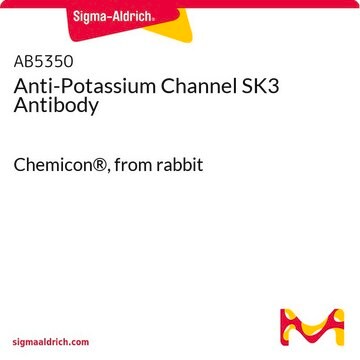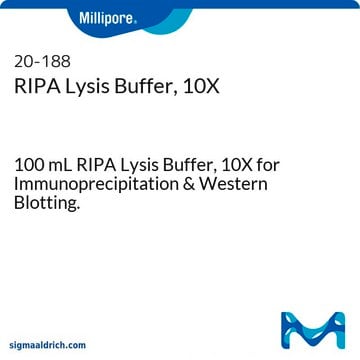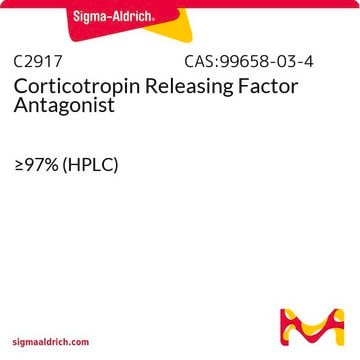P0608
Anti-Potassium Channel SK3 (KCa3, Kcnn3, SKCa3) antibody produced in rabbit
affinity isolated antibody, lyophilized powder
Sinónimos:
Anti-KCa2.3, Anti-SK3, Anti-SKCA3, Anti-ZLS3, Anti-hSK3
Seleccione un Tamaño
363,00 €
Seleccione un Tamaño
About This Item
363,00 €
Productos recomendados
origen biológico
rabbit
Nivel de calidad
conjugado
unconjugated
forma del anticuerpo
affinity isolated antibody
tipo de anticuerpo
primary antibodies
clon
polyclonal
Formulario
lyophilized powder
reactividad de especies
rat, human
técnicas
western blot (chemiluminescent): 1:200 using rat brain membranes
Nº de acceso UniProt
temp. de almacenamiento
−20°C
modificación del objetivo postraduccional
unmodified
Información sobre el gen
human ... KCNN3(3782)
rat ... Kcnn3(54263)
Descripción general
Inmunógeno
Aplicación
Acciones bioquímicas o fisiológicas
Forma física
Cláusula de descargo de responsabilidad
¿No encuentra el producto adecuado?
Pruebe nuestro Herramienta de selección de productos.
Código de clase de almacenamiento
11 - Combustible Solids
Clase de riesgo para el agua (WGK)
WGK 2
Elija entre una de las versiones más recientes:
Certificados de análisis (COA)
¿No ve la versión correcta?
Si necesita una versión concreta, puede buscar un certificado específico por el número de lote.
¿Ya tiene este producto?
Encuentre la documentación para los productos que ha comprado recientemente en la Biblioteca de documentos.
Filtros activos
Nuestro equipo de científicos tiene experiencia en todas las áreas de investigación: Ciencias de la vida, Ciencia de los materiales, Síntesis química, Cromatografía, Analítica y muchas otras.
Póngase en contacto con el Servicio técnico








